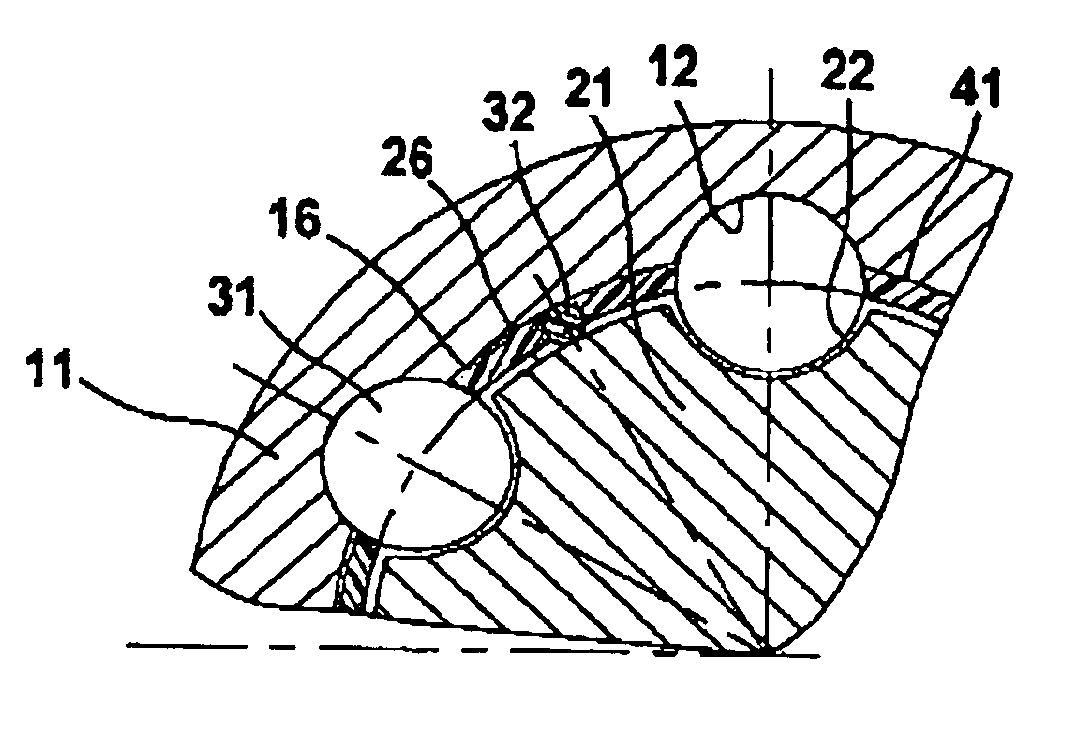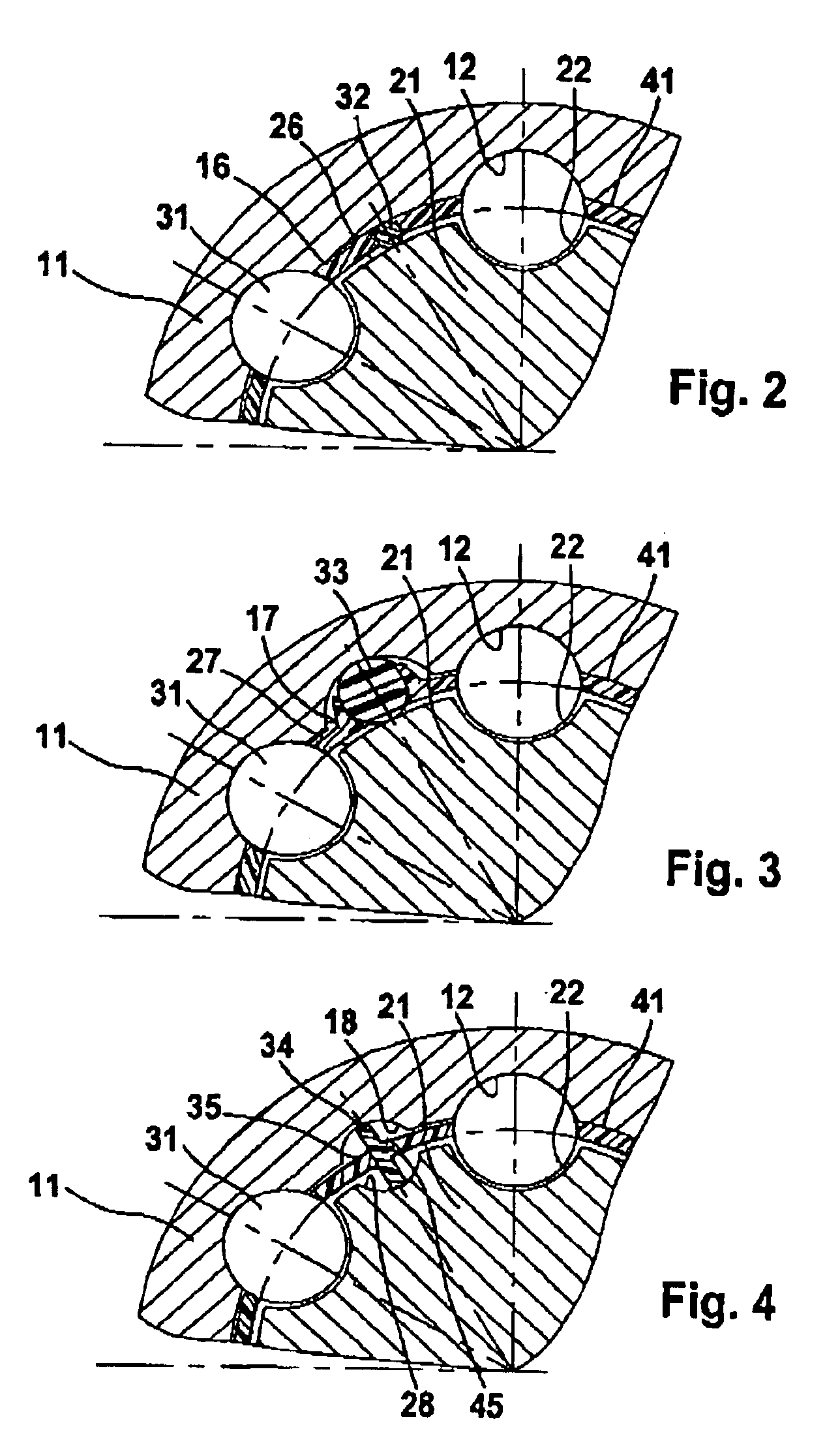Longitudinal displacement unit with braking rollers
a technology of longitudinal displacement unit and braking roller, which is applied in the direction of linear bearings, bearings, shafts and bearings, etc., can solve the problems of insignificant increase in resistance to longitudinal displacement unit displacement under torque, so as to achieve the effect of substantially maintaining the low-friction displacement function and relatively high elasticity of additional rolling members
- Summary
- Abstract
- Description
- Claims
- Application Information
AI Technical Summary
Benefits of technology
Problems solved by technology
Method used
Image
Examples
first embodiment
[0026]FIG. 2 shows a device according to FIG. 1 in a first embodiment in a cross-sectional view. It shows the profiled sleeve 11 with the first ball grooves 12, the profiled journal 21 with the second ball grooves 22 and the torque transmitting balls 31 which are positioned in pairs of ball grooves 12, 22 which are held by the ball cage 41 in the same circumferential distribution. Between each two torque transmitting balls 31, there are positioned additional balls 32 with a smaller diameter which are also clipped into recesses in the ball cage 41. The ball cage 41 can be made of an elastic material. The balls 32 are made of an elastic material and are positioned under radial pretension between the profiled sleeve 11 and the profiled journal 12, and roll on the inner cylindrical face 16 of the profiled sleeve 11 and on the outer cylindrical face 26 of the profiled journal 21. The balls 32 can also be in the form of a cylindrical rod or barrel-shaped rollers. The balls 32 can have an ...
second embodiment
[0027]FIG. 3 shows a longitudinal displacement unit according to FIG. 1 in a Identical details have been given the same reference numbers as in FIG. 2. Between each two torque transmitting balls 31, there can be seen additional balls 33 which are made of an elastic material and which, in a radially pretensioned condition, run in additional grooves 17 in the profiled sleeve 11 and on the outer cylindrical face 27 of the profiled journal 12. As a result, when the torque transmitting balls 31 are torque-loaded, the ball members 33 are kept free from circumferential forces and do not take part in the transmission of torque. The grooves 17 have a large radius of curvature as compared to the rolling member 33 radius. Again, the rolling member 33 can be in the form of a ball, rod, or barrel-shaped roller.
third embodiment
[0028]FIG. 4 shows a longitudinal displacement unit according to FIG. 1 in a Details which are identical to those shown in FIG. 2 have been given the same reference numbers. Between each two torque transmitting balls 31 in this embodiment, radially pretensioned disc members 34 made of an elastic material are inserted into the ball cage 41. The disc members 34 run in additional grooves 18, 28 which, in this case, comprise a circular cross-sectional shape similar to the first and second ball grooves 12, 22. Indeed, the grooves 18, 28 can be identical to the inner and / or outer ball grooves 12, 22. During the transmission of torque, the discs 34, because they are tiltably supported in the cage 41, are kept free from circumferential forces and thus from the transmission of torque. In other words, the discus have an oscillating axis of rotation. The discs 34 can be kept in the cage 41 by knobs 45 engaged in central spherical caps 35.
[0029]In each of the embodiments, the number and locati...
PUM
 Login to View More
Login to View More Abstract
Description
Claims
Application Information
 Login to View More
Login to View More - R&D
- Intellectual Property
- Life Sciences
- Materials
- Tech Scout
- Unparalleled Data Quality
- Higher Quality Content
- 60% Fewer Hallucinations
Browse by: Latest US Patents, China's latest patents, Technical Efficacy Thesaurus, Application Domain, Technology Topic, Popular Technical Reports.
© 2025 PatSnap. All rights reserved.Legal|Privacy policy|Modern Slavery Act Transparency Statement|Sitemap|About US| Contact US: help@patsnap.com



